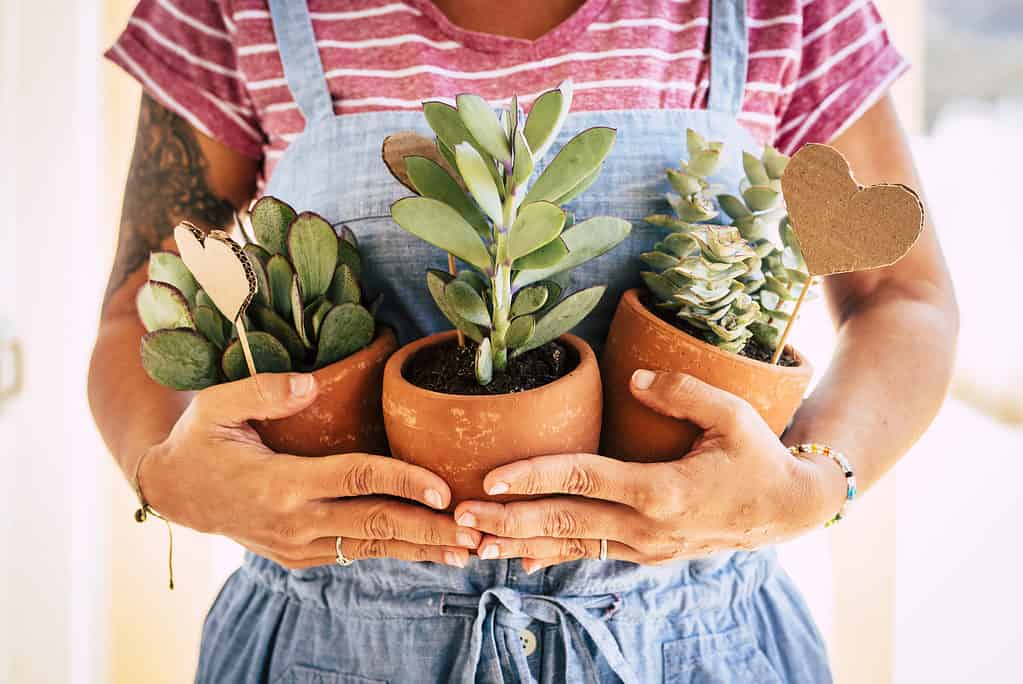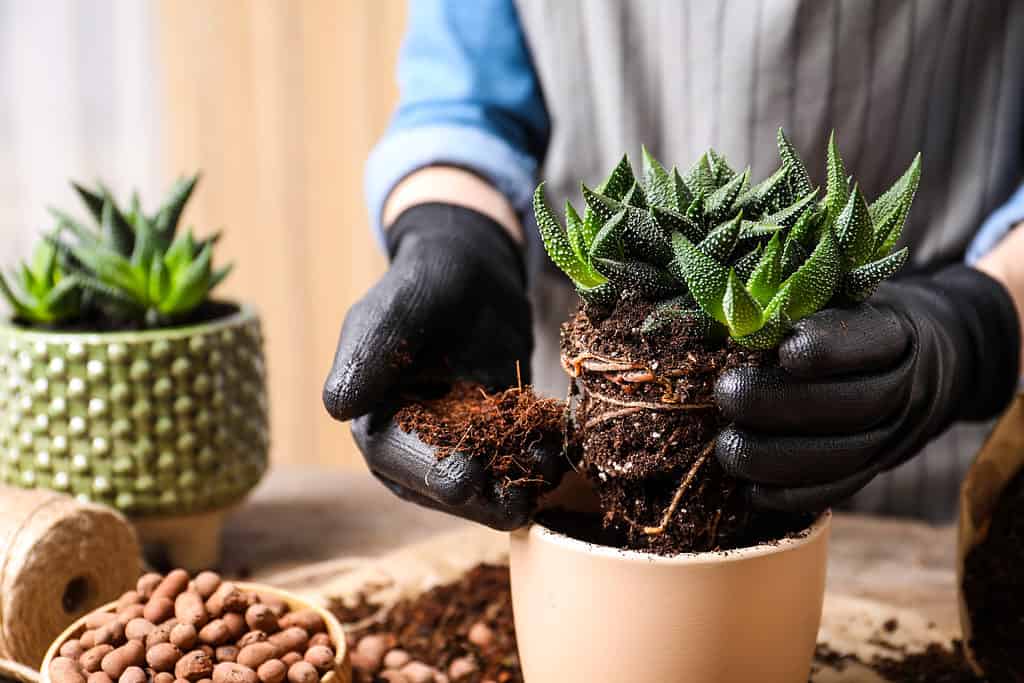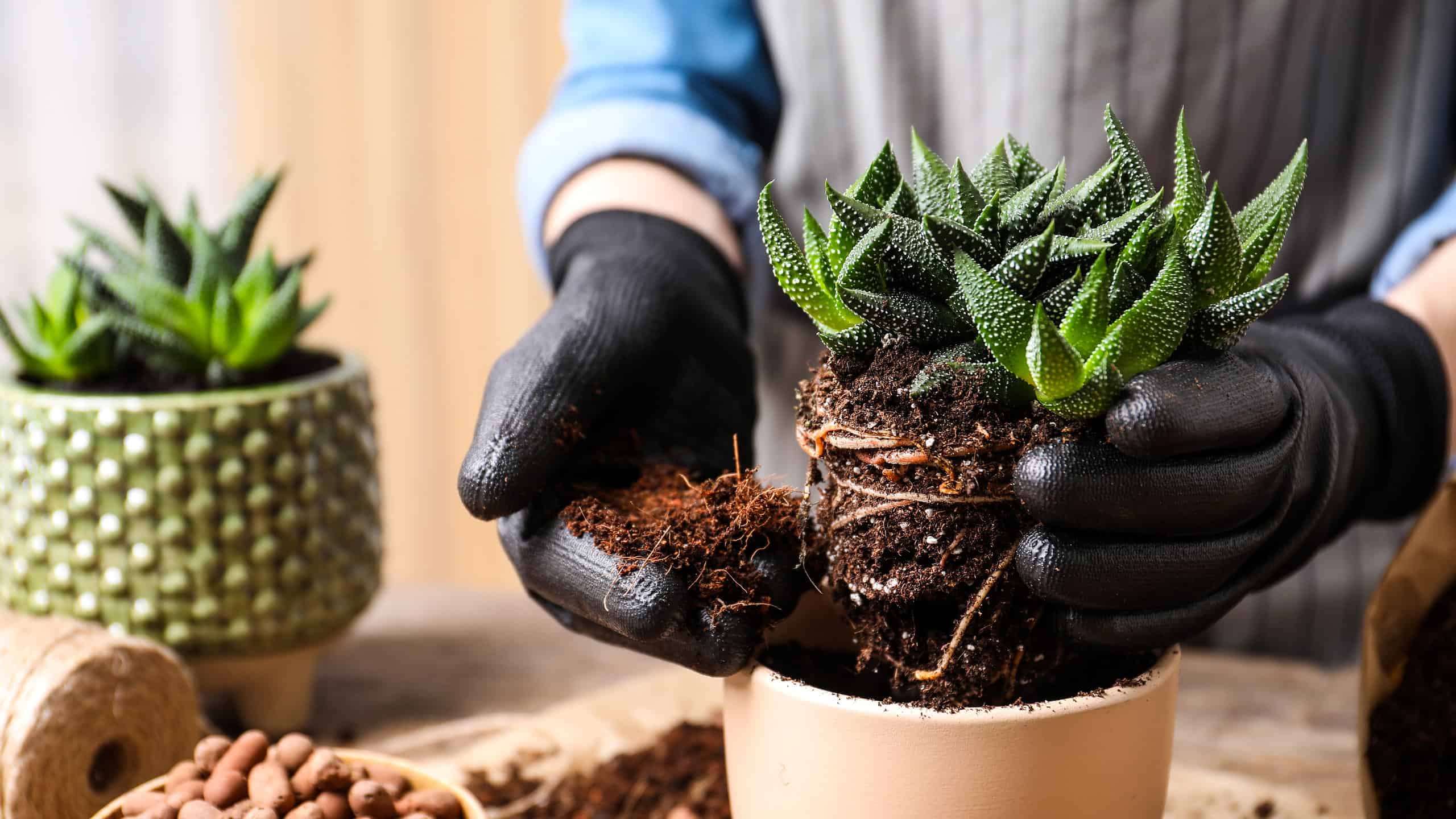Transplanting succulents can be a daunting task. If the process isn’t handled correctly, it could cause your succulent shock or damage. However, it only takes a few simple steps to transplant a succulent successfully.
This article will discuss why and when to transplant a succulent and the simple step-by-step process.
Why Transplant a Succulent?
There are several reasons to transplant a succulent from its existing pot to a new one or an outdoor setting. Some of the most common reasons include the following ones.
Poor Purchase Quality
Sometimes when you purchase a new succulent, its existing pot and soil aren’t optimal for growth. Some plant retailers will use the most affordable options, like coco coir and flimsy plastic, which aren’t ideal for succulents.
Plant Propagated Cuttings
Propagated cuttings, offshoots, or seedlings are usually ready for their own pots after a month or two of growth. Transplanting them ensures they get the environment and space they need to grow.
Outgrowing Existing Pot
As your succulent grows, they may get crowded in their existing pot. If they become root bound, it could stunt their growth. Transplanting them into a slightly larger pot provides space for the roots to grow and thrive.
Overdue for New Soil
Soil quality diminishes over time. You should transplant your succulent into new, nutrient-rich soil at least every two years — even if you have a slow grower.

There are several reasons to transplant a succulent from its existing pot to a new one or an outdoor setting.
©iStock.com/simonapilolla
When to Transplant a Succulent?
The best time to transplant a succulent is during the spring. Succulents start to wake from their dormant stage and prepare for growth during this stage. This puts them in a prime position to recover from the shock of being transplanted and helps them root in their new home.
If you notice a problem with your succulent after the spring has passed, try to transplant it before the winter dormancy period returns.
How to Transplant a Succulent: Step-By-Step
You’ll need a fresh pot, succulent or cactus soil, a small trowel, and a mister to transplant your succulents. Here’s a step-by-step guide:
- Select the right pot – succulents need drainage to prevent root rot. Choose a pot with drainage holes slightly bigger than the existing pot to protect the roots.
- Prepare your succulents – plan ahead and water your succulents a few days before you transplant them. This step ensures they’re at peak health before the big move.
- Prepare the work area – put everything you need in a clean work area. Wash all tools and pots before transplanting your succulents.
- Remove the succulent from its current pot – gently tip the succulent pot over and pull the succulent from its pot. If you experience resistance, use your trowel or clean hands to remove the soil. Don’t tug aggressively.
- Inspect the succulent – use this opportunity to inspect the roots for signs of decay. Trim away dead tissue if needed.
- Wipe the succulent – use this opportunity to wipe dust, dirt, and pests off the succulent with a warm washcloth. This helps your succulent photosynthesize.
- Plant the succulent – place the succulent in the new location, covering the roots with soil. The base of the succulent should be level with the soil. Ensure the new location isn’t blocked by other pots or plants that cast the sun-loving succulent in shadow.
Avoid watering your succulent for the first week after the transplant to give it ample time to root. You should also avoid fertilizing the plant for 2-3 months following the transplant to give it time to adapt to its new environment.

Good soil will provide the right water, air, and nutrients for your succulent to thrive.
©New Africa/Shutterstock.com
Thank you for reading! Have some feedback for us? Contact the AZ Animals editorial team.








